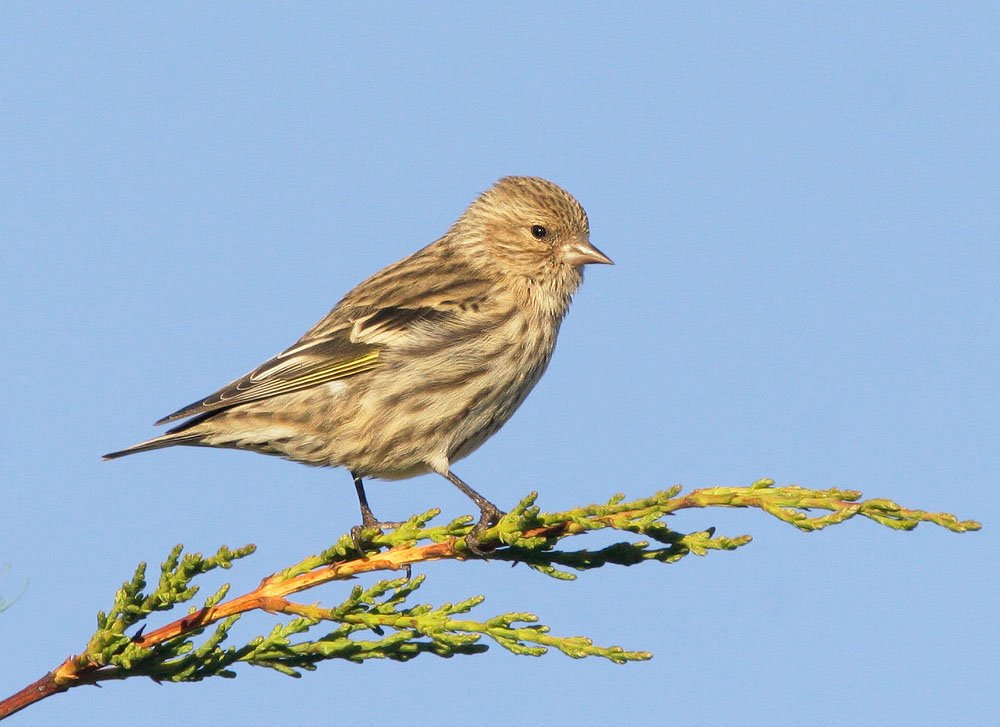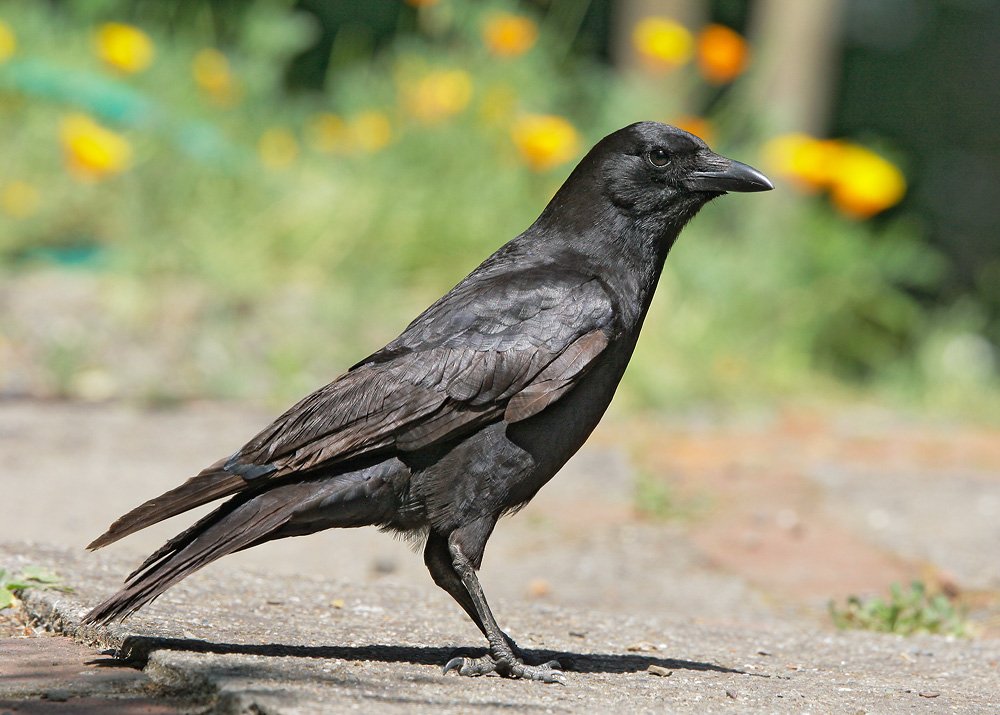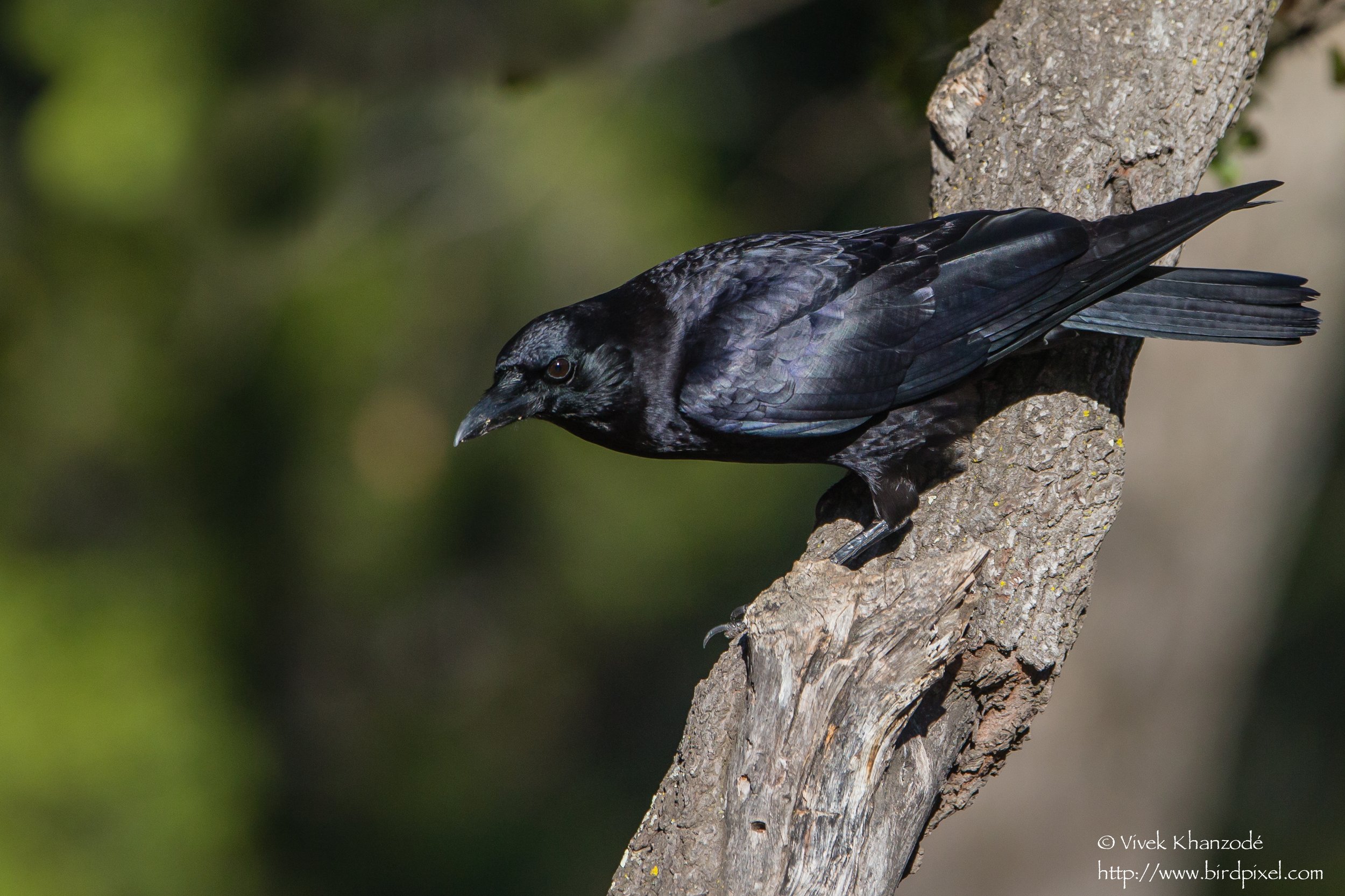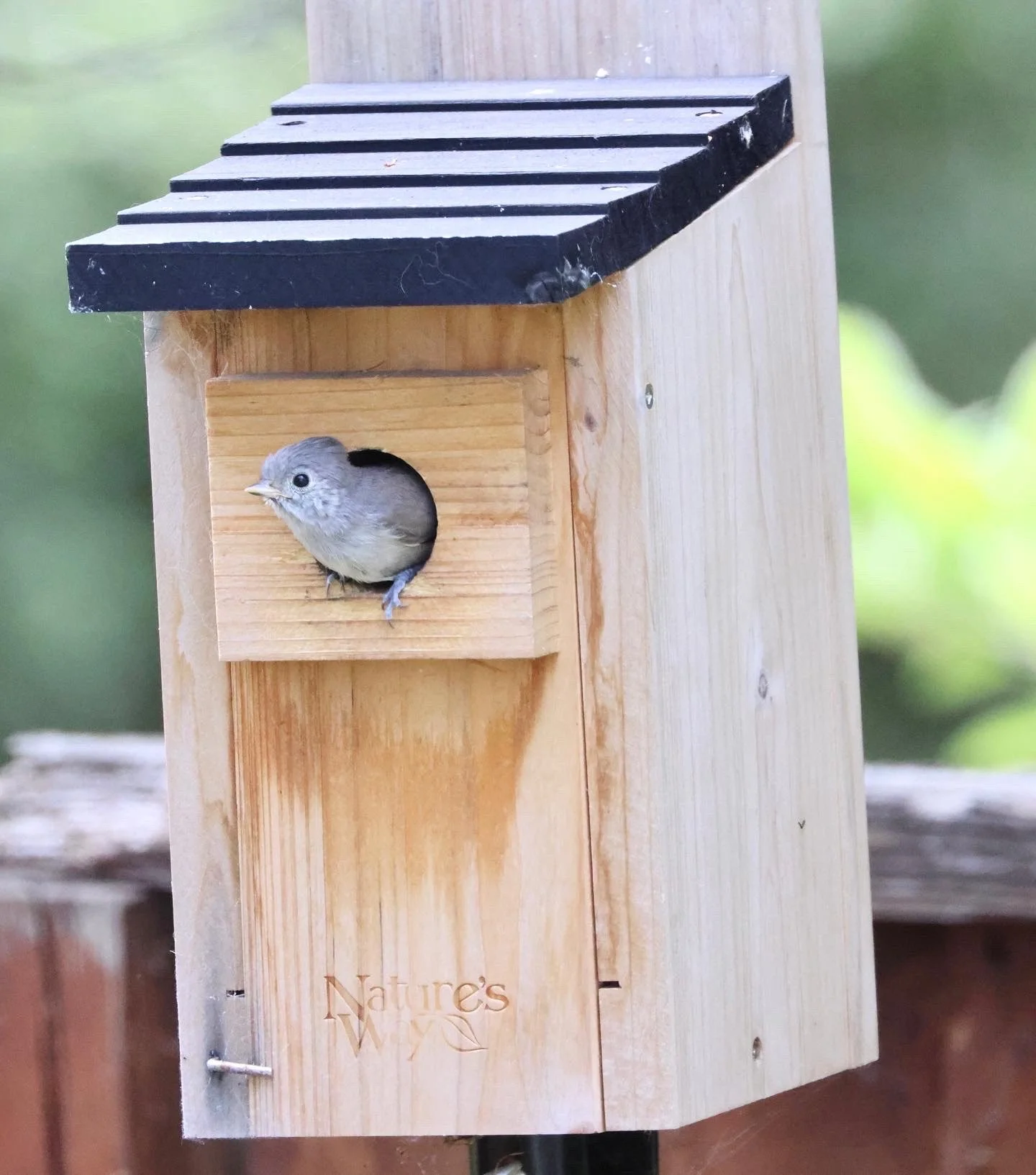September Bird Celebration
All Around Town
GBBC PHOTO GALLERY
Our gallery from the Great Backyard Bird Count is here! Enjoy photos of a wide variety of Bay Area birds, taken by local photographers during the event. Send your three favorite GBBC images to photos@scvas.org to be included in the gallery. Photo: Carol Ann Krug Graves
Call for Photos and Artwork
GREAT BACKYARD BIRD COUNT
All Around Town
All Around Town welcomes the new year with your latest backyard bird observations, as well as your highlights of 2022! Last year, you added 28 new species to the project’s collective bird list. Enjoy stories, photos, videos, and audio clips of the birds that live among us, submitted by you, our members and friends.
Call for Photos and Artwork -old
WESTERN BLUEBIRD
All Around Town
FEEDERWATCH STARTS SOON
Count birds for science this winter! FeederWatch runs from November through April, and you can join anytime during the season. You don't need feeders or a yard, and you don't need to count at home either - pick a spot that you can observe often and follow a schedule that you decide. If you're already looking out your window at birds, this project is a good match for you, and it helps birds. Learn more in our Avocet article and sign up here. Photo: Curt Bianchi
All Around Town
Pine Siskin
Pine Siskin
by Dave Zittin
Every once in a while Pine Siskins appear in our backyard. These birds “irrupt” or move into areas in great numbers where food is abundant. These irruptive flights occur in the winter and are caused by poor availability of food over their northern range.
Pine Siskins are members of the Fringillidae family, which is a widely distributed and diverse group that includes the American Goldfinch, the Hawaiian honeycreepers, and the Neotropical euphonias, and more. Most members of this family are exclusively seed, fruit, and vegetable eaters. Pine Siskins are in the genus Spinus (20 species), which locally includes Lawrence's Goldfinch, the Lesser Goldfinch, and the American Goldfinch.
Pine Siskin showing sharply pointed bill, thin yellow lines in wing and heavy streaking on back and under parts. Photo: Tom Grey
Like other members of their family, Pine Siskins are mostly vegetarian and feed on seeds of conifer and deciduous trees such as alder, birch, sweet gum (Liquidambar), and maple. They also eat fresh buds of various plants and wild sunflower seeds.
Interestingly, Pine Siskins consume salt from various sources, which suggests that their vegetative diet lacks minerals. Some are killed by road traffic in winter when they consume salt used to melt ice and snow.
Pine Siskins tolerate freezing cold winters provided they obtain sufficient food to maintain their metabolism. Unlike hummingbirds, which lower their metabolism as an adaptation to cold (torpor), Pine Siskins raise their metabolism—as much as five times over baseline—to tolerate temperatures as low as -70 degrees Fahrenheit. This requires a lot of food. Compared with their close relatives, Pine Siskins can store more body fat, which helps them withstand the cold. They also store up to 10% of their body weight in food in their crop, a specialized throat pouch. This storage provides 4-5 hours of additional energy to help them through cold nights. Observations suggest that Pine Siskins feed at night when there is bright moonlight which could help them make it through the cold until sunrise.
At feeders, they attack birds larger than themselves including Purple Finch and House Finch. I have even seen them attack and chase away much larger Evening Grosbeaks in the Sierra Nevada Mountains. Their sharply pointed beaks make effective, and I am sure painful, prods to incentivize other birds to get out of the way. If they are unable to open seeds, they will not chase away birds that can crack the shells, expose the seed and provide them with scraps.
Pine Siskins demonstrate strong flocking characteristics throughout the year, even when foraging during the breeding season. When we were in rural Colorado, a large flock descended on a stand of waist-high composite plants and in every imaginable position, much like chickadees.
Pine Siskins can carry and spread salmonella at feeders. It’s important to always sanitize feeders regularly, but when a salmonellosis outbreak occurs, removing feeders to disperse birds is important to reduce the spread of this lethal disease. Read more about salmonellosis outbreaks and on cleaning feeders here: https://scvas.org/backyard-bird-blog/salmonellosis.
Attracting Pine Siskins to Backyards
Any feeder containing seeds, especially hulled seed chips, will work. Pine Siskins especially like nyjer and black sunflower seeds. Composites such as dandelions, and sunflowers will also draw Pine Siskins to your backyard.
Lesser Goldfinch (top) and Pine Siskin (bottom). Photo: John Richardson
Description
The Pine Siskin is a small and streaky finch with a thin, sharply pointed bill and a notched tail. It has two dusky wing bars that fade to white over time. Flight feathers have yellow bases, which are obvious in flight but otherwise mostly concealed. These yellow bases often show up as inconspicuous, thin yellow lines on the wing when they are at rest.
Distribution
The Pine Siskin is a challenging research subject because of its unpredictable migration patterns and the apparent low fidelity to specific breeding areas. Lack of food in the northern part of their range likely triggers irruptions elsewhere. Pine Siskins occur over most of the United States and north into Canada and south into northern Mexico.
Similar Species
Compared with other members of the genus Spinus in Santa Clara County, the Pine Siskin is the only member with conspicuous streaking on its underparts. Its tiny size, very sharp, pointed bill and the yellow base of its flight feathers make it easy to identify. The yellow is conspicuous in flight and sometimes apparent on the wing as thin yellow lines when the bird is at rest. The female House Finch, which can appear similar to the Pine Siskin, has heavy streaking on her underparts but will never have yellow on the wings. The bill of the female House Finch is conical instead of long, narrow and pointed like that of the Pine Siskin.
Explore
Salmonellosis outbreaks and cleaning feeders - Santa Clara Valley Audubon
Safe bird feeding - All About Birds
Cleaning your feeders - Feeder Watch
Songs and calls - All About Birds
Photo showing yellow on flight feathers, heavy streaking and sharp pointed bill.
Photo of flying Pine Siskin showing yellow bases of flight feathers on wings and tail
Distribution map - All About Birds
“Pine Siskins Have Taken Over the Country” - National Audubon
More Backyard Bird Information
View more common Santa Clara County Backyard Birds
Visit our Backyard Birding page
Tell us what you’re seeing in your yard! Send your notes, photos, and sound clips to backyardbirds@scvas.org. We’ll feature your submittals on our website.
Banner Photo: Pine Siskin by Brooke Miller
All Around Town
American Crow
American Crow
BY DAVE ZITTIN
The American Crow has to be the most difficult backyard bird to write about because there have been so many interesting studies on this species. The goal of this article is to introduce you to the American Crow and hopefully make you want to learn more on your own.
American Crow. Note the brown feathers. Photo by Tom Grey
When I was a grad student, we spent summers in a small fishing village on the West Coast of Vancouver Island, where we frequently heard a metallic “bong” or “boing” sound similar to that of a rapidly released metal spring. The sound came from within a dense conifer forest, and we spent months looking for its source. Eventually, we found it: a Northwestern Crow. (Recent research has folded the Northwestern Crow into the American Crow, so the Northwestern Crow no longer exists as an independent species.) Crows can mimic sounds of other species including the human voice, so the boing sound we heard could have been a mimic of some unknown sound.
American Crow by Brooke Miller
American Crows are highly-adaptable opportunistic feeders consuming seeds, marine, and terrestrial invertebrates, eggs, nestlings of other bird species, turtles, small rodents, fruit, road-kill, garbage, and more. Once, we had American Crows feast on bags of groceries we were transporting by boat. They quickly found our cheese packages, and during the seconds we were away from the boat carrying bags into the house, they excavated the cheese blocks remaining on the boat. This species is extremely intelligent and will sometimes cooperate when it comes to acquiring food. In one case, American Crows were observed taking a fish from a river otter. One pecked at its tail, causing the otter to drop the fish, while the other crow grabbed the fish and flew off to a perch where they both had a feast. American Crows are often mobbed by other bird species who are protecting their eggs and young from this predator. American Crows will eat carrion, but their beaks aren’t strong and sharp enough to pierce the skin of a dead animal, so they must wait for a better-equipped carrion feeder to break the skin. Crows will also carry turtles, nuts, clams, etc. into the air and drop them on hard surfaces to crack them open.
American Crows congregating by John Scharpen
American Crows are social. Family groups of up to 15 individuals stay together, and sibs from previous hatches help raise younger brothers and sisters. Outside the breeding season, large numbers of American Crows come together to roost at night. These roosts can consist of tens of thousands of individuals and can be quite annoying to nearby people.
American Crows damage some crops. It is legal to hunt and kill this species in some areas of the United States. However, evidence suggests that American Crows may benefit corn crops by eating pest insects that overwinter in the corn stubble.
Crows have an uncanny ability to recognize human faces and will distinguish good people from bad (see behavior video in the explore section).
Attracting Crows to Backyards
I don’t go out of my way to attract them, but they do show up infrequently to eat the bird seed mix I spread on the ground.
Description
A large, black bird with a large black beak, black feet, and black legs. Their feathers have a slight iridescent sheen. The body feathers of molting individuals take on a brown coloring. The Latin species name of the American Crow is brachyrhynchos. Brachyrhynchos is Latin for “short-beaked.” This name is confusing to me because many other members of the same genus, Corvus, have beaks that are as short as the American Crow’s. Compared with the Common Raven (same genus), there is no question that the crow’s beak is shorter. Perhaps this is the reason.
Notice the squared-off tail end of this American Crow. Photo by Vivek Khanzodé
Distribution
The American Crow is found throughout the year over much of the United States, along the west coast of North America, and west into the Aleutian Islands. They also occur across much of southern Canada in the breeding season. They will live almost anywhere there is a food source and some trees on which to nest and perch. They tend to avoid deserts.
Similar Species
The Common Raven and the American Crow are similar at first glance. Paying attention to a few differences can help determine which species you are viewing. In flight, Common Ravens exhibit long glides and can soar in thermals. American Crows exhibit short glides and flap their wings more than Common Ravens. They do not soar in thermals. You will often read that the Common Raven’s tail is wedge or diamond-shaped in flight and the American Crow’s tail lacks this diamond shape. Be careful with this difference because as crows land or fly in a slow, steep turn, they splay their tails, giving them a wedged-shaped appearance.
American Crow in flight by John Scharpen. Note the shorter fan-shaped tail.
Common Raven in flight by John Scharpen. Note the diamond-shaped tail.
American Crows and Common Ravens make different sounds. Typically the adult Raven makes a guttural “gawk” sound, and the adult American Crow usually makes its trademark “caw” sound. A roosting American Crow bobs its head down then up as it vocalizes and sometimes slightly opens its wings. A vocalizing Common Raven is relatively still. The throat and head of the Common Raven are often fluffed or ruffled; those of the American Crow are usually smooth.
Common Raven with fluffed throat and head by Dave Zittin
The Fish Crow of the south and eastern parts of the United States looks very much like the American Crow. They can be told apart by sight and sound.
Explore
To explore American Crows in more detail, I recommend the following videos:
Crow “boing” sound from the Urban Nature Enthusiast. Note the strong bobbing when they vocalize.
Excellent video on American Crow behavior from Lesley the Bird Nerd. Note bobbing while vocalizing at 3:11 and 8:53
Common Raven versus American Crow from the Raven Diaries
More Backyard Bird Information
View more common Santa Clara County Backyard Birds
Visit our Backyard Birding page
Tell us what you’re seeing in your yard! Send your notes, photos, and sound clips to backyardbirds@scvas.org. We’ll feature your submittals on our website.
Banner Photo: Vivek Khanzodé
All Around Town
All Around Town
All Around Town
Brown-headed Cowbird
Brown-headed Cowbird
BY DAVE ZITTIN
GeneralIy I find it unsettling to watch a tiny Dark-eyed Junco feeding a much larger immature Brown-headed Cowbird. The junco in our backyard worked overtime feeding the voracious, constantly begging juvenile cowbird.
Brown-headed Cowbirds are brood parasites. Brood parasites lay their eggs in the nests of other birds of the same or a different species. Brown-headed Cowbirds do not build their own nests, so their eggs are always laid in nests of a different species. Bird biologists call this obligate nest parasitism. The bird receiving the nest parasite’s eggs is called a host.
Brown-headed Cowbird by Teresa Cheng.
The Brown-headed Cowbird is a member of the genus Molothrus which combines two ancient Greek words: “to struggle” and “to sire”. The Brown-head Cowbird is a member of the family Icteridae which includes, among others, blackbirds, orioles, and meadowlarks.
Female Brown-headed Cowbirds are stealthy and spy on the nests of host species. When the time is right, they sneak into the nest and lay their eggs. They sometimes destroy the host’s eggs. The cowbird eggshell is strong, and their eggs have an incubation period that is usually shorter than that of the host eggs. The young cowbird grows faster than the young of the host bird. Young cowbirds often push eggs and the young of the host species out of the nest to reduce competition for food.
Dark-eyed Junco feeding juvenile Brown-headed Cowbird by Sushanta Bhandakar
Before Europeans arrived in the Americas, Brown-headed Cowbirds were limited to the grasslands of central North America where they followed buffalo herds that stirred up insects. The diet of Brown-headed Cowbirds is about 70% grain and 30% insects. They parasitize nests on the edges of forests. Early settlers cleared trees which led to forest fragmentation that allowed them to expand their range by providing more open areas, more forest edges, and more potential host species. By the 1980s, the Brown-headed Cowbird had spread over the entire United States, northern Mexico, and southern Canada. They took advantage of new host species that had no experience with their aggressive nest parasitism, and today they are nest parasites of over 240 bird species.
Dark-eyed Junco feeding two juvenile Brown-headed Cowbirds by Tom Grey
Some host species eject the eggs of nest parasites, bury them by constructing a new nest floor or damage the eggs by breaking their shells. However, some species accept the Brown-headed Cowbird eggs. For some hosts, the situation is dire. A well-studied case is that of the endangered Kirtland's Warbler. Before 1900, Brown-headed Cowbirds had not occurred in the breeding areas of this warbler in Northern Michigan. In 1971, only 200 male Kirtland’s Warblers were known to exist and about 70% of the nests of this warbler were parasitized by cowbirds. Cowbird traps were employed and trapped cowbirds were killed. In 2018, the program was deemed successful, and the traps were removed. There are now estimated to be 2300 breeding Kirtland’s Warbler males and less than 1% of nests are estimated to be parasitized. Today the Cowbird population is greatly reduced in areas where this warbler nests. This is not so much because of trapping, but because forests have been managed to regrow, increasing the ratio of forest area to forest edge. It’s hard to fault the cowbird. It did what it does best and human activities opened the way for it to expand its range. Today it’s recognized that trapping cowbirds and habit restoration have to go hand in hand to rescue an endangered species impacted by nest parasitism from the Brown-headed Cowbird.
Attracting Brown-headed Cowbirds to Backyards
If there are nesting birds in and around your backyard, Brown-headed Cowbirds will likely appear during the breeding season, especially if you have grain feeders. In our backyard, the Brown-headed Cowbird seems to appear a few days per year during the onset of nesting.
Description
Brown-headed Cowbirds are stout blackbirds with a thick, conical bill. Adult males have brown heads and black bodies. Under poor light conditions, the head appears black. Females are light brown with a slightly lighter-colored head, a white throat, and fine streaking on the belly. Juveniles have heavy streaking on their underparts and their backs appear scaly.
Female Brown-headed Cowbird by Tom Grey
Distribution
Brown-headed Cowbirds occur over most of Mexico, the United States, and southern Canada. They are in Santa Clara County throughout the year.
Similar Species
The female Brewer’s Blackbird resembles a female Brown-headed Cowbird. The cowbird has a lighter-colored throat and a shorter, thicker conical bill compared to the longer, thinner bill of the female Brewer’s Blackbird. In general, the thick, conical bill separates the Brown-headed Cowbird from other similarly colored local icterid species. The eye color of the Brown-headed Cowbird is dark, never red or yellow.
Explore
Biology, ecology, and evolution of nest parasitism
Brown-headed Cowbirds
More Backyard Bird Information
View more common Santa Clara County Backyard Birds
Visit our Backyard Birding page
Tell us what you’re seeing in your yard! Send your notes, photos, and sound clips to backyardbirds@scvas.org. We’ll feature your submittals on our website.
Banner Photo: Brown-headed Cowbird by Teresa Cheng


































